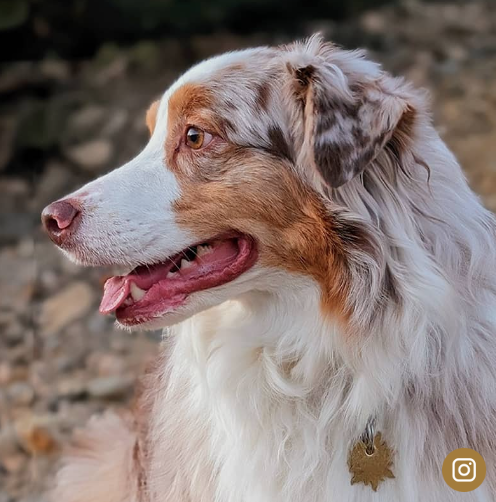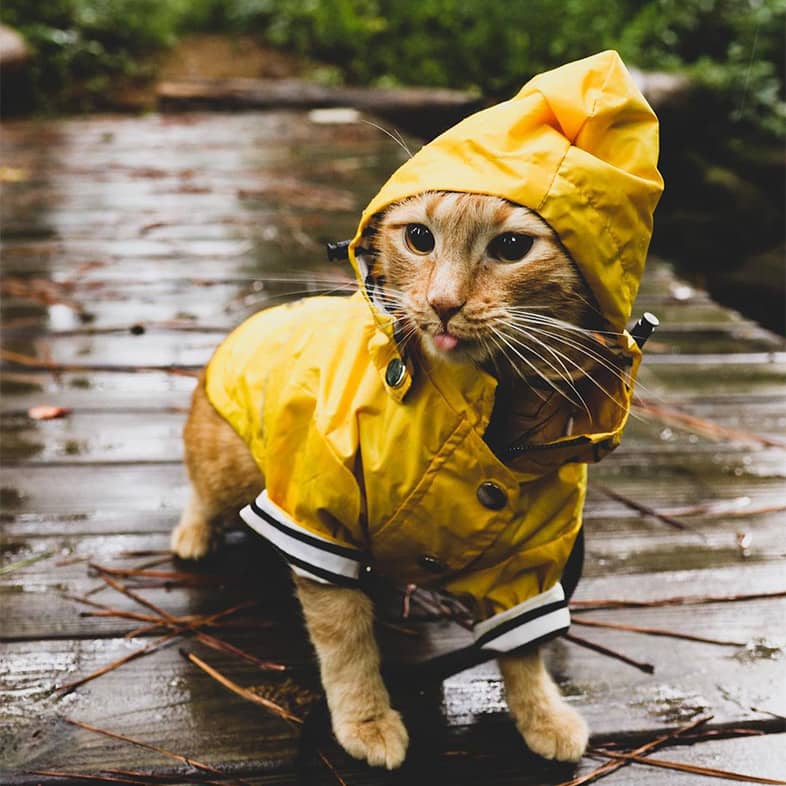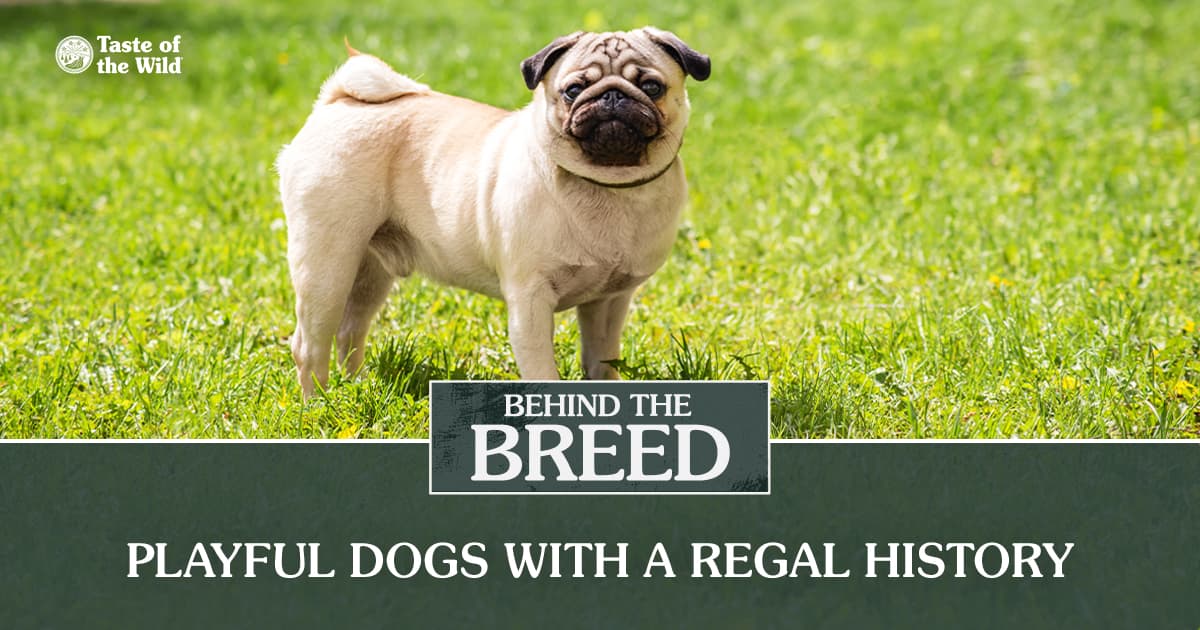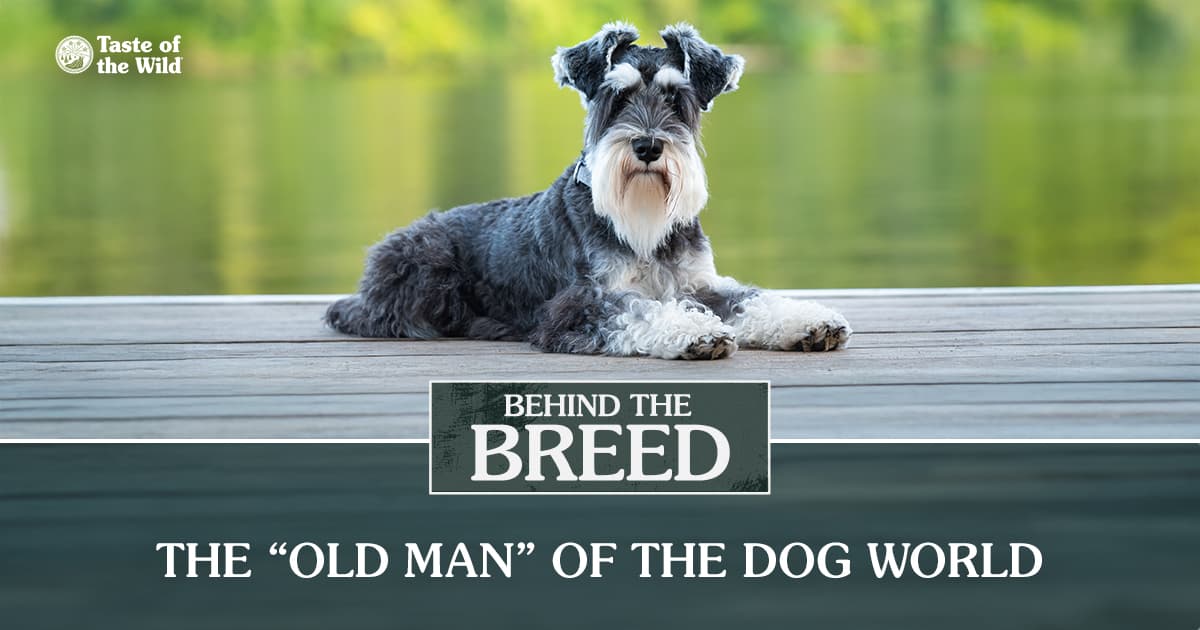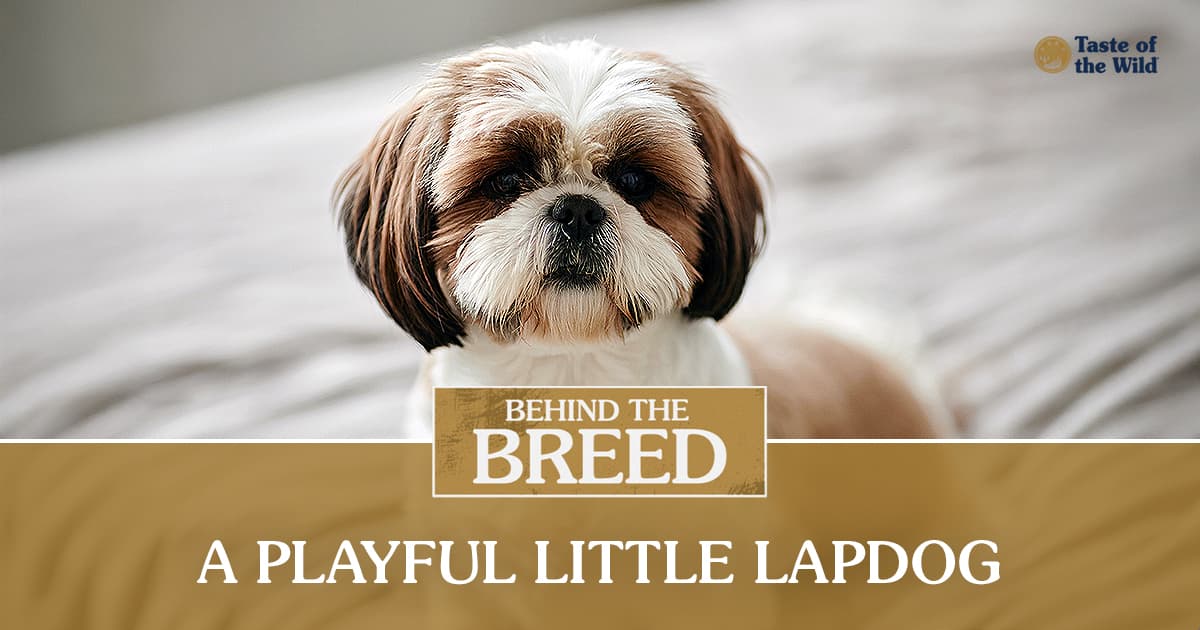Behind the Breed: Pomeranian
Category: Behind the Breed
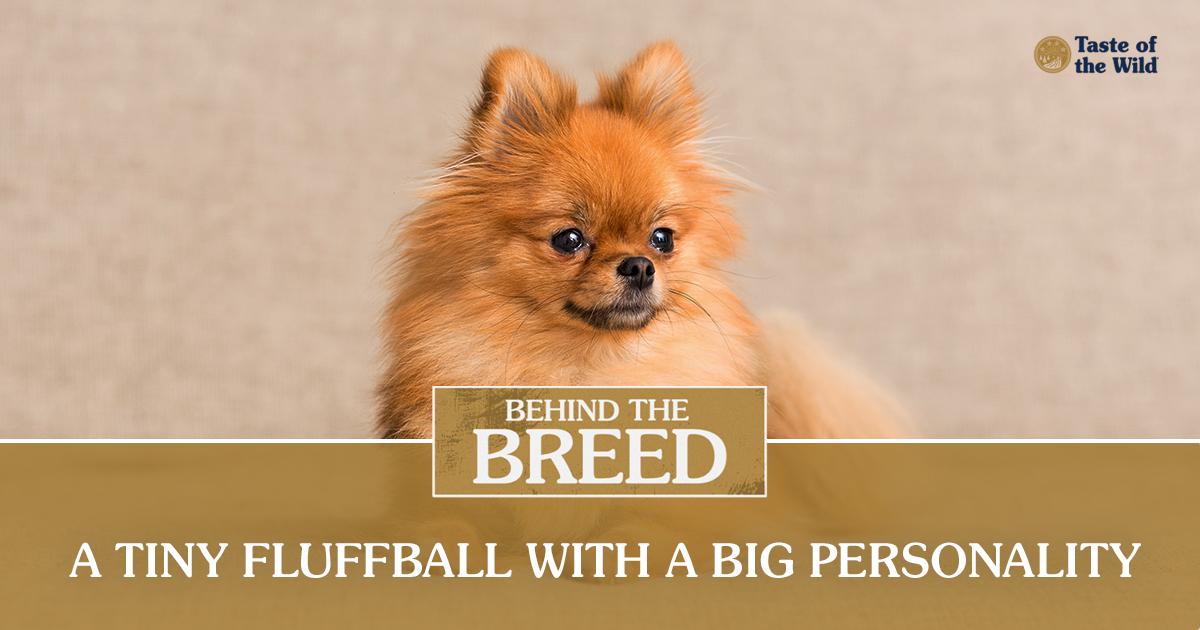
Have you ever wondered about the origins of a dog breed? In our “Behind the Breed” series we’ll dive into the history, personality and physical appearance of a particular breed. We’ll also cover some of the FAQs about the breed and maybe some fun facts, too!
Known for their super-fluffy double coats and their teeny, tiny bodies, Pomeranians are a popular dog breed with a history that traces back to arctic sled dogs. They also aren’t afraid to stand up to other dogs twice (or ten times) their size!
What Is the Pomeranian Personality Like?
Much like dachshunds, these highly intelligent little dogs often don’t see themselves as little. Despite their small size, they project a self-assured attitude that rivals any large dog. They love to snuggle and play with their families, excel as loyal companion dogs and, in most cases, don’t require much exercise beyond a good play session. Keep in mind that they like to tell the world their opinion, making regular barking a given with Pomeranians. Like any dog, socialization and training is important, ideally as a puppy, so they don’t develop bad behaviors like excessive barking or separation anxiety.
Pomeranians, like huskies, pugs and others, naturally carry their tails straight up or curled over their backs. A straight-up tail position or one that’s curved over the back can be a sign of aggression, dominance or defense in dogs, so to know how your Pom is feeling, make sure you take in other social clues like if they are stiff, tense or their lips are pulled back.
Where Do Pomeranians Come From?
Pomeranian ancestors can be traced back to a group of dogs called spitz sled dogs from northeast Europe — which helps explain their fluffy double coat. These Pom ancestors were much larger than the Pomeranians of today, weighing in at around 30 pounds. Queen Victoria is said to have been responsible for breeding them to their current smaller size. They were recognized as a breed by the American Kennel Club in 1888.
Pomeranian Dog Size
As one of the smallest dogs in the world, Pomeranians typically grow to just 7 inches tall. Smaller Pomeranians can weigh just 3 pounds and the breed usually maxes out at 7 pounds. That’s one tiny breed! Their toy dog size can make them vulnerable to being snatched up by a bird of prey or being hurt by a playful larger dog. So always watch a Pomeranian closely when they’re outdoors or playing with other pets. You should supervise young children around any dog, but, particularly with toy dogs like Pomeranians, it’s important to make sure children understand how to be gentle with them.
Do Pomeranians Shed?
Pomeranians shed their undercoats year round, but will have heavier sheds in the spring and fall as their summer/winter coats are transitioning. Brushing them regularly will help remove their fluffy undercoat and allow air to circulate near their skin, which is one of their natural cooling mechanisms. Helping your dog shed their undercoat can also help the skin stay drier, which in turn can help prevent skin complications from insect bites and hot spots.
Regular (perhaps daily) brushing of Pomeranians is needed to keep their fur fluffy and clean. Taking them to a professional groomer to have their coat cut shorter (but never shaved) can help with coat management. The Pomeranian coat comes in a variety of colors, including sable, brindle, merle, white, black, blue, chocolate, cream, orange, red and tri-colored, as well as many combinations and patterns of these colors.
Pomeranian Lifespan and Health Issues
Like other small-breed dogs, Pomeranians have a relatively long lifespan of around 12 to 16 years. While they are typically healthy little dogs, they are prone to some health conditions, including eye problems (e.g., dry eye, cataracts, corneal ulcers), collapsing trachea (which causes difficulty breathing), dental disease, seizures and kneecap issues (patellar luxation). Responsible breeders will screen for these health problems, though.
Are Small Breeds Right for You?
If you’re looking for an affectionate small dog with an active nature, Pomeranians may be a good option. With the personality of a much larger dog, these lively dogs are comfortable in most homes. However, if you’re looking for a toy dog to be your purse buddy like a Chihuahua or shih tzu, these energetic pups may not be the right fit for you.
The information in this blog has been developed with our veterinarian and is designed to help educate pet parents. If you have questions or concerns about your pet’s health or nutrition, please talk with your veterinarian.
